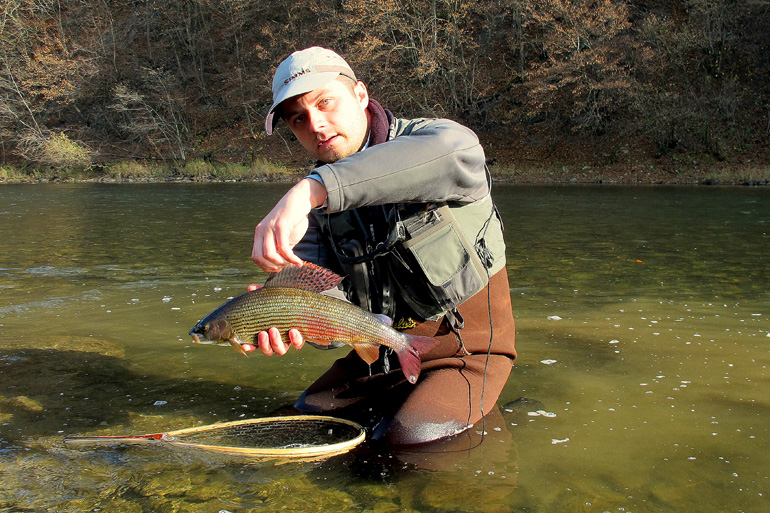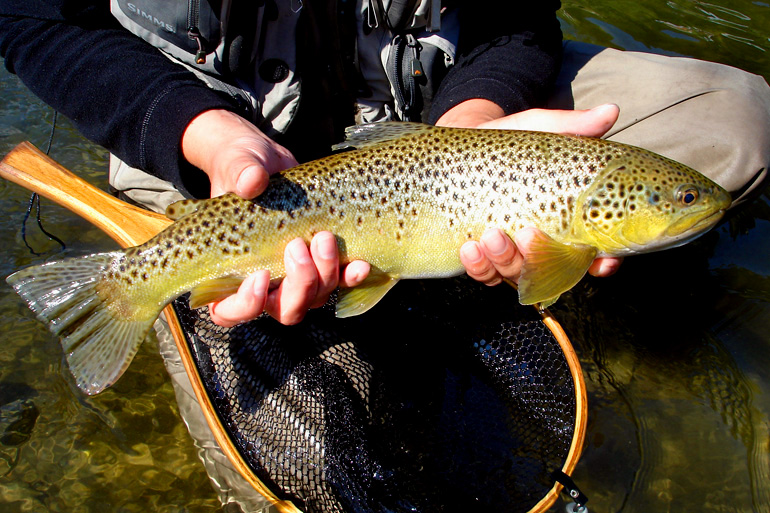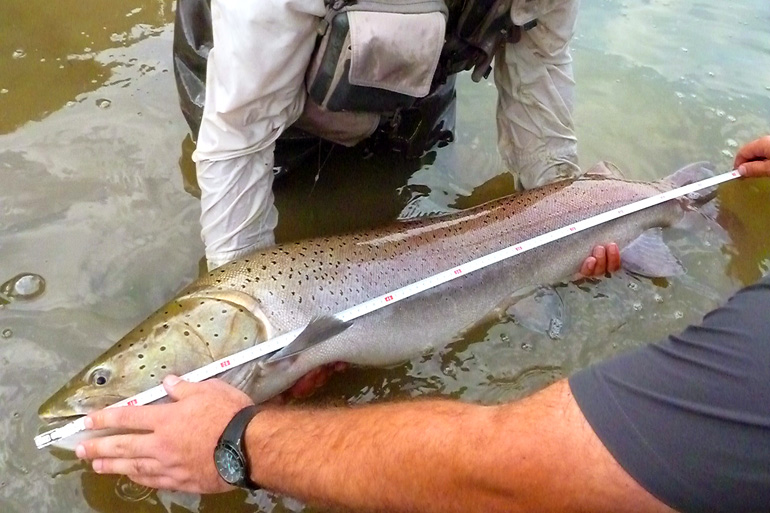Fish and fishing
Currently, in the special stretch of the San there live several thousand brown trout and grayling, which puts the Polish river among European leaders. Most of the fish come from natural spawning, special spawning grounds are built for this purpose, and they really help to increase the population of fish in the river. All fish, after being caught, must be released back into the water (a strict principle of “catch and release”), which guarantees affluence of the fishery for many years.
Grayling

In periods of insects swarming on the river, you can watch thousands of captures, which makes dry fly fishing on the San very effective (the best time for dry fly fishing is mid-May to October). The fish can, however, be very selective (particularly large grayling) and sometimes not easy to catch. The key is to choose the right fly and the manner of leading it. Fortunately, our excellent guides (each of them spends over 150 days a year on the San) know the effective fishing techniques and models of effective fly, to outwit the fish!
As regards grayling, there are plenty of specimen fish in the San, longer than 50 cm, and most even exceed 60 cm in length! Grayling are beautifully colored (gold-orange with purple hues), stocky and very brave. When fishing dry flies, however, one often needs to use leaders 0.10-0.12 mm in diameter, therefore it is relatively easy to lose a specimen fish. Another very effective method when fishing for grayling is a long or short nymph, which makes it ideal, when grayling do bites a dry fly.
Brown trout

Brown trout is also very abundant trout in the special stretch. Usually 25 to 45 cm fish are caught, but in the river there are also a lot of specimens in sizes of 50-60 cm (the biggest trout caught each year in the special stretch exceed 60 cm in length!). Smaller trout are caught alternating with grayling in shallower pools, while bigger specimens are more territorial and hold on to the deeper parts of the river. In spring, trout are caught most effectively using streamers, while later in the season, dry fly and nymph become more effective. Trout from the San are light golden, slender and have striking black and red dots.
Both trout and grayling are not particularly difficult to catch for a skilled fly angler. Of course, in terms of these months of the year, when the fish are active prey-wise. By using the right bait and set (rod, line, leader), and the method of presentation of the flies, there is an almost 100% guarantee that regardless of the place on the special stretch, the angler will not depart from the bank “with an empty rod”.
Danube salmon

The population of this large predator increases in the Sana from year to year. Currently, in the special stretch of the San there live, according to the water manager’s estimates, there are 50-70 Danube salmon with a minimum length of 90 cm. The biggest Danube salmon caught exceed 120 cm in length and 15 kilos in weight, and the most effective way to catch them is a large streamer or a very large nymph. The Danube salmon in a special stretch are only in a few, deeper places, so that finding these fish is not difficult. Unfortunately, the Danube salmon feed quite rarely, and catching at least one of them is a task not so simple.
The fish are very slender and have copper-colored the scales. Fighting the Danube salmon, due to its strength, rarity and infrequent feeding, is an unforgettable experience.
